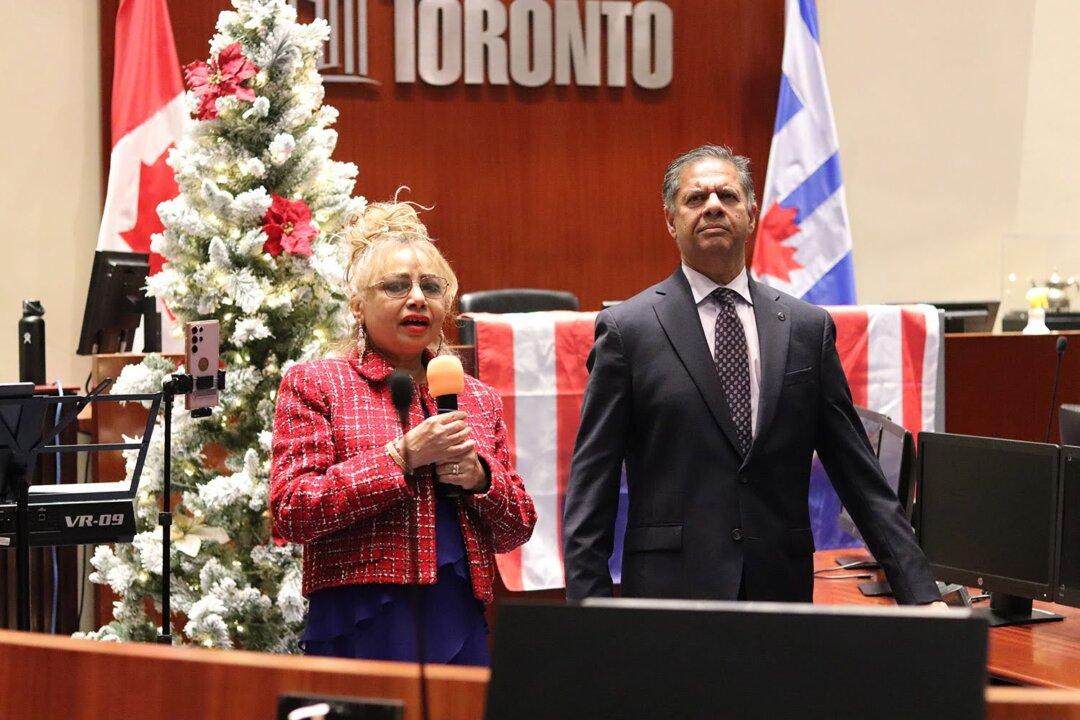Amid the nearly 1,500 wildfires that British Columbia has seen so far this summer, one of the regions most affected has been the Kamloops Fire Centre region in B.C.’s southern Interior, which encompasses the Okanagan. Local residents shared their experiences of devastation and evacuation as around 270 of the fires remain actively burning.
Cathy Wilde lives in a trailer park in a housing development on the reserve land of the Okanagan Indian Band northwest of Vernon, B.C.
“The winds were shifting … so they didn’t know what was going to happen. So I had my car mostly packed for over a week, and kind of sitting on the edge,” Wilde said in an interview.
“I packed up as many clothes as I could. And I packed air mattress bedding, a pillow, hiking boots, good and personal items that I wanted to keep in case the place burned down.”
She checked websites for evacuation orders for days. As she drove by Swan Lake the night she was evacuated, nature gave her the message.
“The sky was red from the smoke and from the flames reflecting off the smoke. And then the lake looked like blood. ... I’ve been through fires before in the 30 years I’ve lived in the valley here, but it was never ever like this. Never,” Wilde said.
That Friday night, Aug. 6, her landlord arrived around 11:30 p.m. to announce it was time to go.
“It was so brutally crazy ... breathing in the debris,” she said, noting that the ash from the fire was like snow. “When a snowstorm hits, well, that’s what it felt like, but it stuck.”
“The smoke, the ash, and the debris flying around was absolutely worse than being able to see flames. It was so bad you couldn’t stand being outside.”
Wilde stayed with friends in Vernon for a few days, then the rain she prayed for arrived and allowed her to return home.
Relocating From ‘Smokanagan’
B.C. has had 1,462 fires this year since April 1, with 268 still burning as of the evening of Aug. 10. These include 21 in the Coastal region, 6 in the Northwest, 57 in the Prince George area, 86 in the Kamloops region, 64 in the Southeast, and 34 in the Cariboo region. Among them, 816 were suspected to have been caused by lightning, 468 by people, with the remainder of unknown cause.Total area burned so far this fiscal year—from April 1, 2021, to March 31, 2022—stands at more than 650,000 hectares as of Aug. 9. Eleven active fires are each bigger than the total of 14,536 hectares consumed by fire from the previous fiscal year. The largest of these is the 77,102-hectare fire at Sparks Lake northwest of Kamloops, which began on June 28.
In many regions, air quality has been poor for weeks. For hairstylist Amber Roberge, it became too much almost a month ago.
“I bought an air purifier. It wasn’t good enough because I have compromised lungs and I had to leave,” Roberge said in an interview.
“They used to call it summer, but now they call it the fire-burning season,” she added.
Roberge left with her mother for Vancouver on July 12, hoping things might clear up after a few days. Instead, it’s now been four weeks there spent first with friends, then in hotels, then in short-term rentals. While they wait for better news from home, things have only gotten worse.
“Everyone is talking about relocating” from the Okanagan, she says, which has jokingly been renamed the “Smokanagan.”
“My friends are farming in Kelowna. ... And the bees aren’t able to pollinate their farms as well because of all the smoke. There’s no bees, and their crops are being cut down into next to nothing. My brother’s working outside doing construction and they’re working in these hazardous conditions,” Roberge said.
Seeking Better Surveillance, Response
Over the last decade, from fiscal year 2011 to 2020, B.C. faced 1,352 wildfires in an average year, with 562 (42 percent) caused by people, and the remainder by lightning. On average, such fires consumed 348,917 hectares annually, causing $265.3 million in damages. The fires of 2017 and 2018 were particularly bad, consuming more than 1.2 million hectares and causing over $600 million of damage in each of those years.Ian Madsen, senior policy analyst with the Frontier Centre for Public Policy and a resident of Surrey, B.C., said the economic devastation will include the sectors of transportation, mining, and agriculture, as well as summer tourism.
“A lot of people go to the interior of B.C.—from coastal B.C. and from Alberta—to lakes, some mountains, wineries. ... And now with smoke nearly everywhere that people usually go, that’s hard to bear,” Madsen said.
“There'll be many millions of dollars a month just from damages. And then loss of future trees to the forestry industry. And there’s also all the other economic activity too and that isn’t happening.”
Although fires are considered a natural process that occurs as part of many forest ecosystems, typically caused by lightning during warm and dry seasons, Madsen believes this summer’s experience calls for better surveillance and a more robust response.
“I just don’t understand how you cannot see something that is several hundred square metres and is emitting smoke in an area that you should be watching anyway because it’s been dry. And then suddenly, you don’t do anything until it’s ... several thousand square kilometres, which is monstrous,” he said.
“They need to change their whole approach. And also they need to change their understanding of the nature of what it is that they’re dealing with.”





